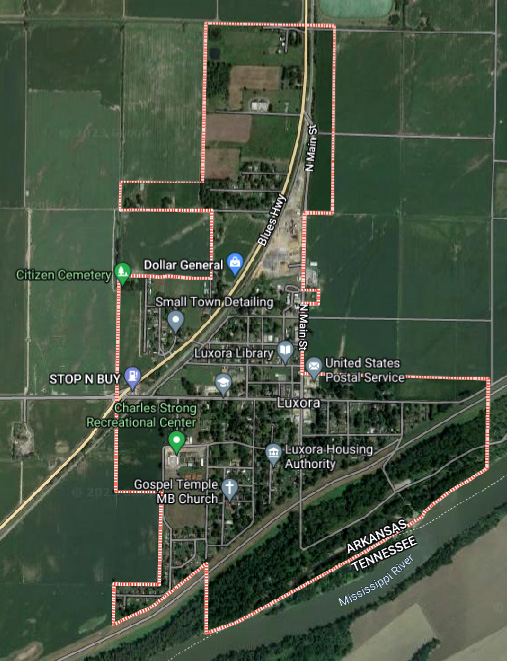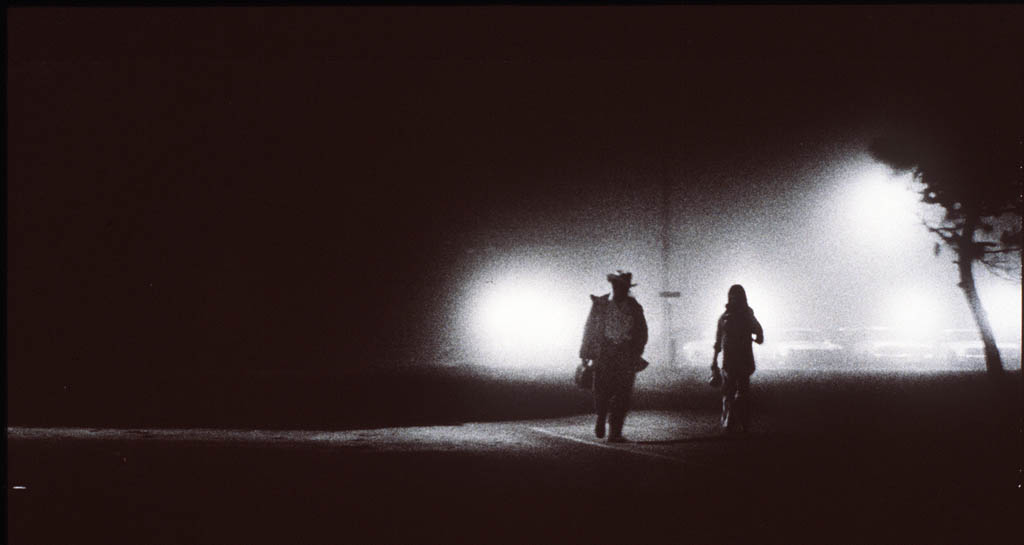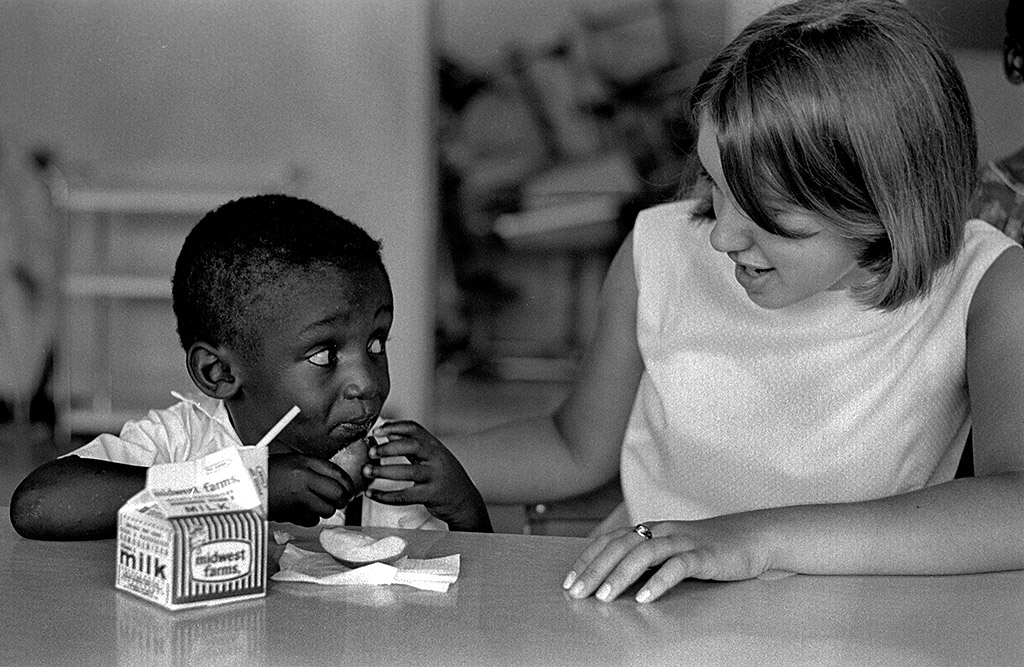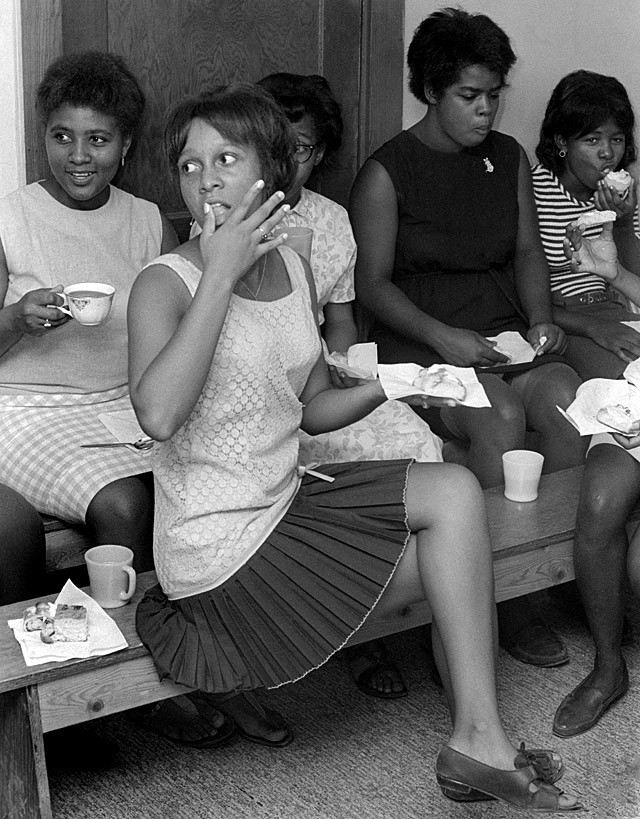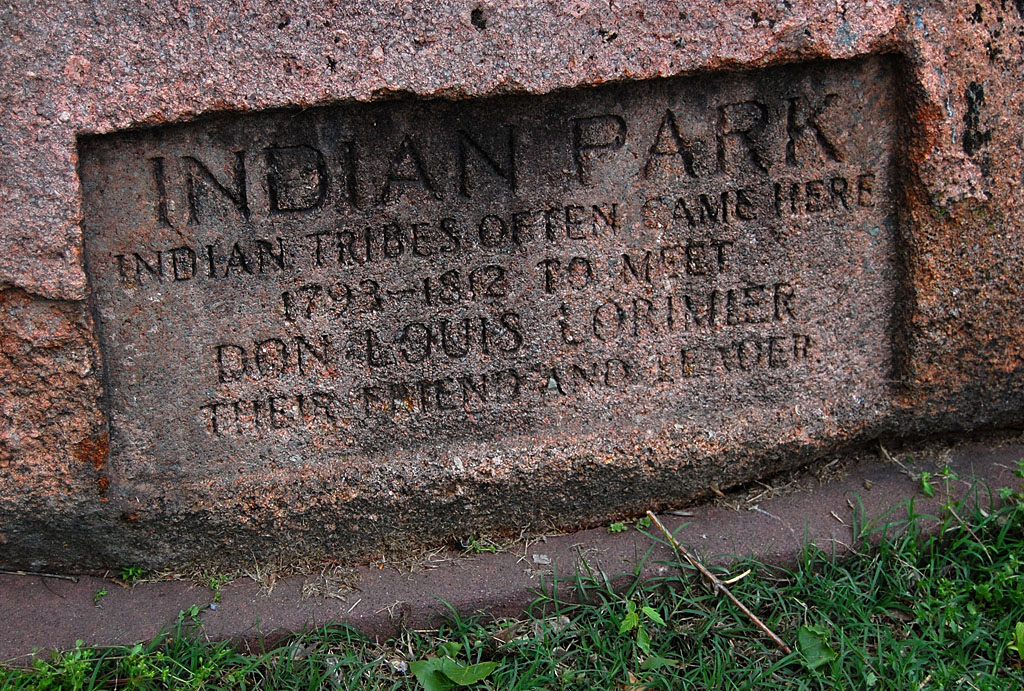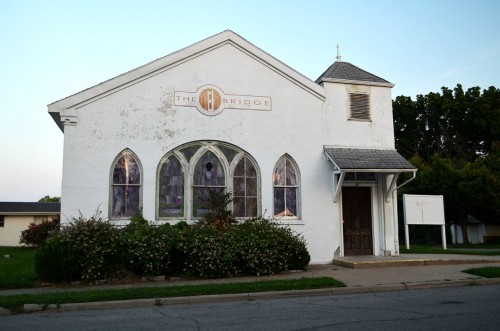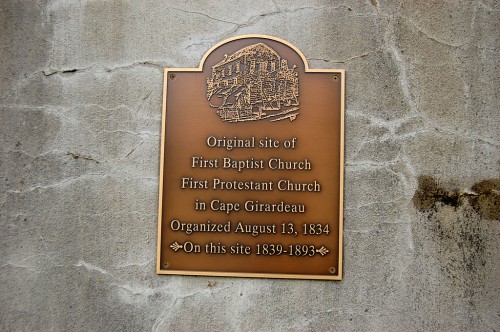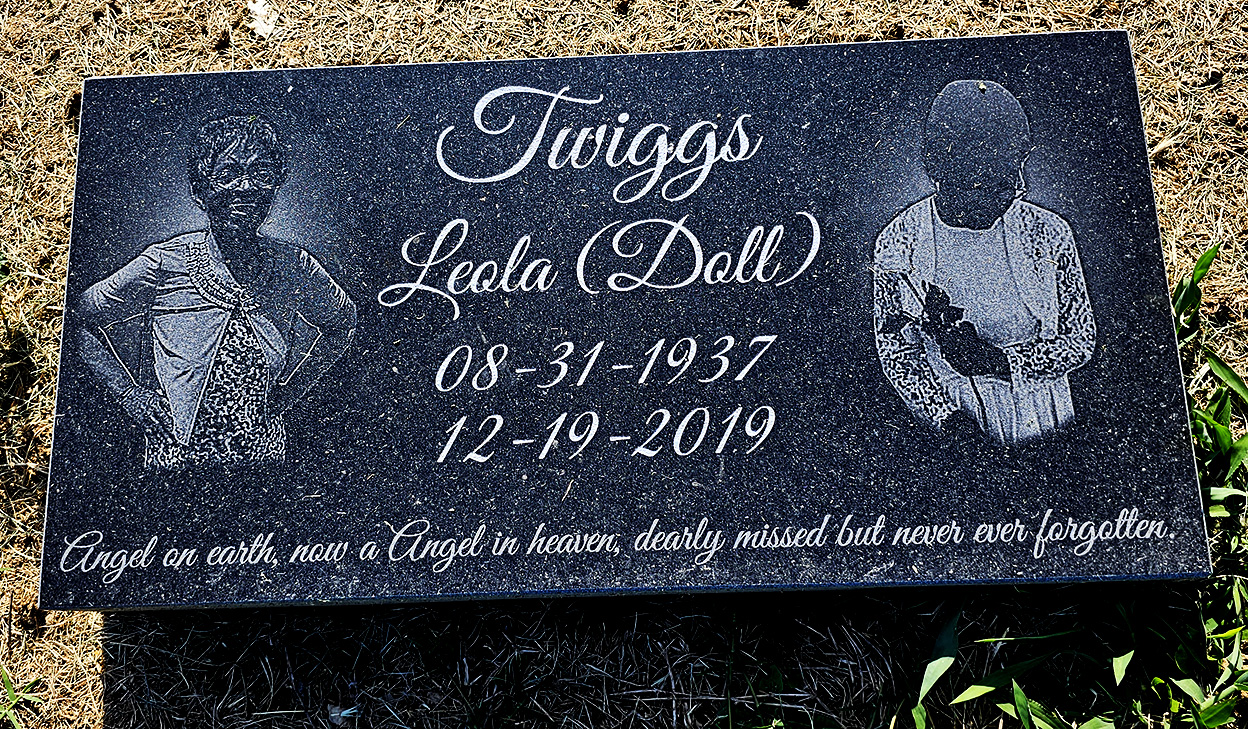
Memorial Day weekend is the time when I usually stroll through the area’s cemeteries looking for men and women who made the ultimate sacrifice in the service of their country. (You’ll find some of those at the end of this post.)
My ramble through the New Lorimier Cemetery in Cape landed me at this intriguing grave stone in Section 4, Lot 195, Grave 4. I figured that there had to be a story behind the sassy-looking woman on Leola (Doll) Twiggs’ stone.
I had no idea what a remarkable woman is buried there.
The first stop was Find a Grave, which had her obituary embedded in the listing.
Born in Luxora, Arkansas
Leola (I hope she’ll forgive me for using her first name) was born August 31, 1937, in Luxora, Ark., to Johnny and Hattie Mae Mack. The tiny town is sandwiched between the Blues Highway (Hwy 61) and the Mississippi River.
It had a population of 1,178 in the 2010 census, and only 942 ten years later. The satellite photo is from Google Maps.
Moved to a segregated Cape at 3
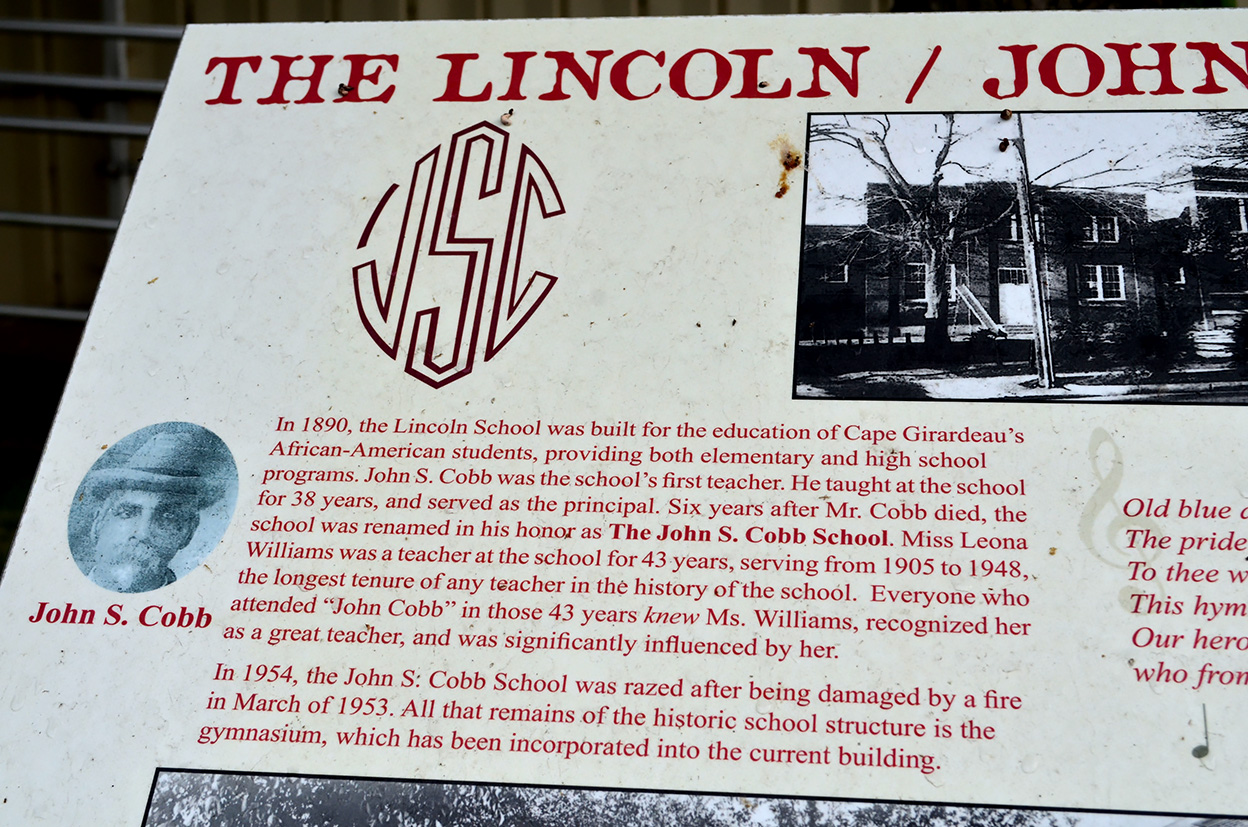
She attended the all-Black John S. Cobb School until the city’s schools were desegregated in 1954, after Cobb School burned down.
She was one of 24 Black students to attend Central High School in the fall of 1954. She was the only student of color in many of her classes, and felt separated even within the integrated school, a Missourian story by Callie Clark reported in 2004.
Worked the fields in the fall
She entered Central as a senior, but, because she joined her father and siblings working in the fields for several months in the fall, she was required to attend an extra semester and graduated in January 1956. (Note: this is a picture of a man and his daughter in Immokalee, FL, on their way to the fields, not Leola.)
“My expectation was teachers are teachers, and they treat children alike. I found out they didn’t,” Twiggs said.
In one class, she remembers watching her white classmates gather around the teacher’s desk, laughing and joking. When she approached to ask for help with an assignment, the teacher asked her to sit down.
“I started thinking, ‘They don’t want me here,'” Twiggs said. “When they’d ask me a question, I didn’t want to answer anymore. It didn’t seem quite worth it.”
She lived in a number of places, including Dayton, Ohio, before returning to Cape Girardeau in 1969.
She joined East Missouri Action Agency in 1969
She took a job with East Missouri Action Agency, where, over the years, she worked as a site manager, bus driver and teacher. (Note: this was a picture of a Girl Scout Head Start volunteer in 1967, not Leola.
Head Start, created in 1965, is considered the most successful, longest-running national school readiness program in the U.S., providing comprehensive education, health, nutrition and parent involvement services to low income children and their families.
In 2009, she was honored by the agency for 40 years of service.
Taught Sunday School and volunteered at Civic Center
She taught Sunday School at New Bethel Baptist Church, and before starting with Head Start, she volunteered her summers to work with children at the Cape Civic Center from 1965 to 1968. (Note: this was a Civic Center baking contest in 1967. Leola isn’t in it.)
She served her church in many roles over 60 years: Sunday School teacher, mission president, choir president, youth women’s group leader, and prayer meeting coordinator.
The Bridge – a community project
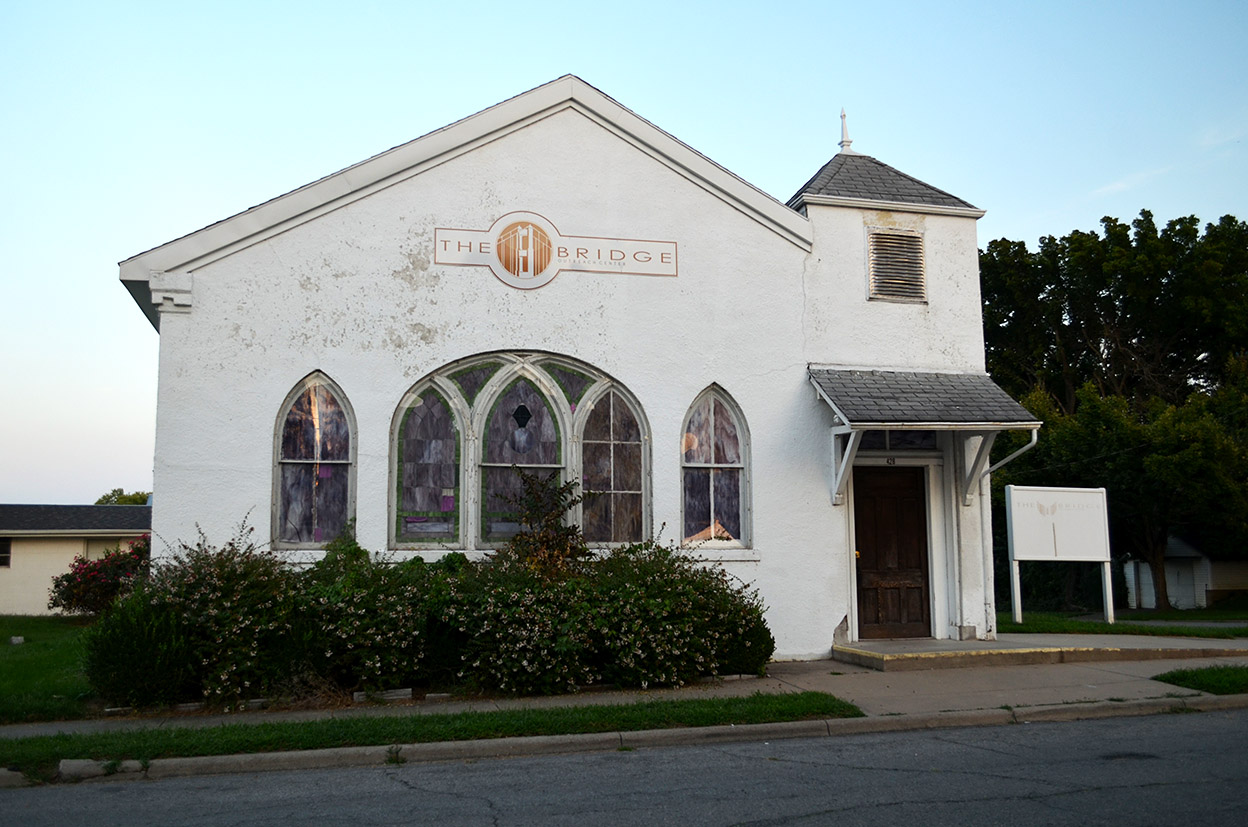
New Bethel Missionary Church – a predominantly Black church – and the largely White La Croix Methodist Church joined forces to launch a community outreach program in 2004.
In 2006, after the two congregations had been meeting in a vacant lot at the corner of Henderson and Jefferson, La Croix purchased the former Second Baptist Church at 428 S. Frederick so that a program called The Bridge could be open to the community.
A five-block processional along Jefferson Ave. preceded the building’s dedication. Leola was quoted in a Missourian story by Jennifer Freeze as saying she hoped the march would send a message to the community.
Campaigned for safer Indian Park
After a young child dashed out into the street from Indian Park and was killed by a passing car, Leola, who lived three blocks from the park, had some suggestions for the city Parks and Recreation Advisory board to make the area safer and more pleasant.
- Reduced speed limits on William and Lorimier in the areas of the park.
- Signs warning motorists that children are playing nearby.
- Parking restrictions on one side of the street during peak hours.
- Improved or permanent bathroom facilities
- Installation of a drinking fountain.
It’s been some time since I took a close look to see if any or all of her recommendations were accepted.
Links to information about Leola
I have confessed that I committed research in pulling this together. I learned in school that if you steal from one source, it’s called “plagiarism,” and you’ll get a failing grade; if you steal from a bunch of sources, it’s called “research,” and you’ll get an A.
Here are some of the sources I tapped.
- Find a Grave New Lorimier Cemetery Memorials
- Ford and Sons Obituary
- Head Start honors Leola for 40 years of service
- 50 years since Cape schools were integrated
- Churches combine to open community center
- Indian Park suggestions
- Panel discussion on Cape race relations
Previous Memorial Day posts
Since this project started out as a Memorial Post and I got sidetracked, here are links to other stories I’ve done about veterans and memorials.
- Thoughts on Memorial Day 2010
- Cpl. Robert Taylor 1947-1968
- Advance’s Military Memorial
- Jackson’s World War I Memorial
- Gary Schemel, first Central student to die in Vietnam
- Civil War statue on Common Pleas Courthouse grounds
- Florida National Guard
- The Price of Freedom
- Stoddard County Confederate Memorial
- Brookside War Memorial in Jackson
- Althenthal-Joerns American Legion Post 158
- The saga of Sgt. Ginter in the Mound City National Cemetery
- The last words of Pvt. Ladd, chosen by lot to be executed
- At least 80 vets are buried on the grounds of the former Athens Lunatic Asylum
- Mass grave of troops killed in the Battle of Mingo Swamp
- Veterans Day flags in Cape and Bollinger Counties in 2013 (with links to other years)
- Seeing the elephant
- Louis K. Juden died “crushing the Huns”
- Two Jackson boys were among the first to die in 1918 – from flu, not battle

